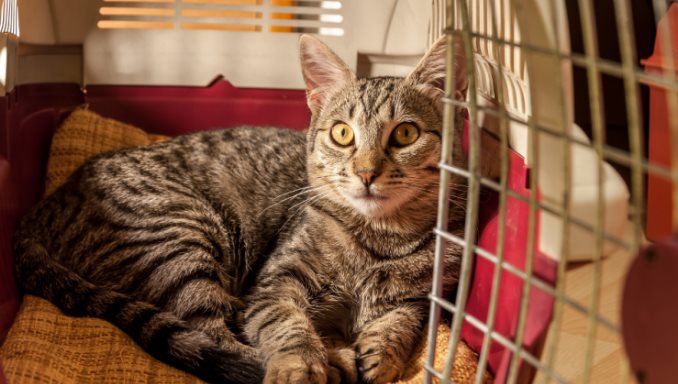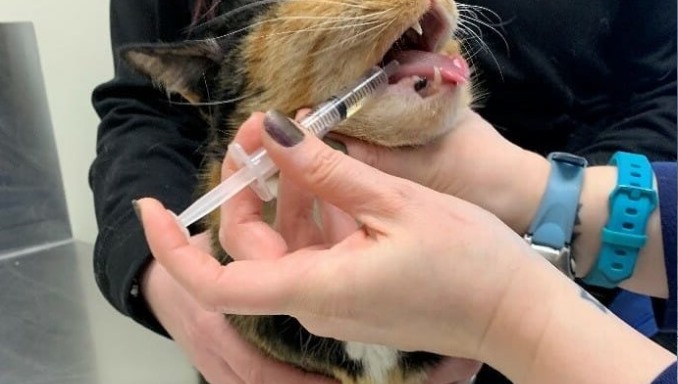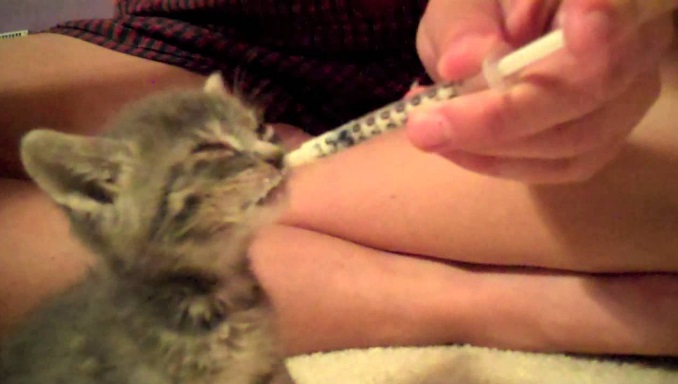How Long Does Gabapentin Last in Cats?
Gabapentin is a medication that is used to treat various conditions in cats. How long does Gabapentin last in cats? It is important to understand how long the medication lasts in order to ensure your cat receives the appropriate dose. This blog post will explore the topic of Gabapentin duration in cats in detail.
What Is Gabapentin for Cats?
Gabapentin is a medication that is used to treat various conditions in cats. It is an anti-epileptic drug, which means it can help to control seizures. It can also be used to relieve pain and itching associated with allergies or other skin conditions. Gabapentin is available in both oral and injectable form, and the duration of action will vary depending on which form is used.
Gabapentin is a prescription medication that’s commonly used to treat seizure disorders in humans. It’s also sometimes used to relieve nerve pain. Gabapentin for cats works in much the same way, providing relief from seizures or nerve pain.
Gabapentin is considered relatively safe for use in cats, but it’s always important to talk to your veterinarian before starting any new medication. Gabapentin can interact with other medications, and it’s important to make sure your cat is healthy enough for treatment.
If you’re looking for an alternative to traditional seizure medications, or if your cat is having trouble tolerating those medications, gabapentin may be worth considering. It’s important to work with your veterinarian to find the best treatment option for your cat’s individual needs.
How Long Does Gabapentin Last in Cats?
Gabapentin is typically given to cats on an as-needed basis, so there is no set answer to how long it lasts. However, the average half-life of gabapentin in cats is about six hours, so it will generally be out of your cat’s system within 24 hours. If you are using gabapentin to manage your cat’s pain or seizures, be sure to talk to your veterinarian about the best dosing schedule for your pet.
Gabapentin is FDA-approved for use in humans and is commonly used off-label to treat various conditions in animals. While there is no definitive answer to how long Gabapentin lasts in cats, the drug has been shown to be effective for up to 12 hours when given at the recommended dosage. However, as with any medication, Gabapentin may not work for every cat and individual results may vary.

Oral Gabapentin for Cats
When oral gabapentin is given to cats, it typically lasts for around 12-24 hours. This means that the medication should be given every 12 hours in order to maintain a consistent level in the cat’s system. If you are using the oral form of gabapentin to control seizures, it is important to give the medication on a regular schedule in order to prevent breakthrough seizures.
If your cat is experiencing pain, your veterinarian may prescribe oral gabapentin. Gabapentin is a medication that is FDA-approved for humans, but it is also commonly used to treat pain in animals. While gabapentin can be an effective pain reliever, there are also some potential side effects to be aware of. In this article, we will discuss the pros and cons of using oral gabapentin for cats.
Pros:
1. Gabapentin is typically very effective at relieving pain in cats.
2. It is a relatively safe medication with few serious side effects.
3. Gabapentin is usually well-tolerated by cats.
4. It is relatively affordable and easy to find.
Cons:
1. Gabapentin can cause drowsiness or sedation in some cats.
2. It may interact with other medications your cat is taking.
3. Some cats may experience gastrointestinal side effects such as diarrhea or vomiting.
4. Rarely, gabapentin can cause more serious side effects such as seizures or kidney damage.
As with any medication, you should always speak to your veterinarian before starting your cat on gabapentin. They can help you weigh the pros and cons to see if gabapentin is right for your cat.
Injectable Gabapentin for Cats
The injectable form of gabapentin typically lasts for around 12-24 hours in cats. This means that the medication should be given every 12-24 hours in order to maintain a consistent level in the cat’s system. If you are using the injectable form of gabapentin to control seizures, it is important to give the medication on a regular schedule in order to prevent breakthrough seizures.
As with any medication, there are potential side effects associated with gabapentin for cats. These may include drowsiness, vomiting, and diarrhea. In some cases, more serious side effects such as seizures have been reported. As always, it is important to speak with your veterinarian about any concerns you have prior to giving your cat this medication.
Gabapentin is a prescription medication that is not FDA-approved for use in animals. However, it is commonly used by veterinarians to treat a variety of conditions in cats. Gabapentin works by blocking certain nerve signals in the brain. This can help to reduce pain and other symptoms associated with conditions like arthritis, cancer, and nerve damage.
If you are considering giving your cat gabapentin, it is important to speak with your veterinarian first. They will be able to determine if this medication is right for your cat and help you to understand any potential risks and side effects.

Should I Use Oral or Injectable Gabapentin for Cats?
If your cat has been diagnosed with a condition that could benefit from gabapentin treatment, your veterinarian will likely recommend either oral or injectable gabapentin. So, which is best for your cat?
Oral gabapentin comes in pill form and is the most common way that vets prescribe this medication to cats. It is generally well-tolerated, easy to administer, and relatively inexpensive. Injectable gabapentin, on the other hand, is given directly into your cat’s muscle and may be a better option for cats who are resistant to taking pills or who need a higher dose of the medication.
Ultimately, the best way to give gabapentin to your cat will be determined by your veterinarian based on your cat’s individual needs. If you have any questions or concerns about giving gabapentin to your cat, be sure to talk to your vet.
How to Give Gabapentin to Cats
Gabapentin can be given to cats either orally or by injection. If you are giving the medication orally, it is important to follow the directions on the bottle. The oral form of gabapentin can be given with or without food, but it is important to give it consistently so that the level of medication in the cat’s system remains constant.
If you are giving the injectable form of gabapentin, it is important to follow the directions on the bottle and to use aseptic technique when administering the medication. It is also important to make sure that you do not inject more than 0.3 ml per pound of body weight per day.
If your cat is in pain, your veterinarian may prescribe gabapentin. This medication can help relieve pain associated with cancer, arthritis, or other conditions. Gabapentin is a human medication that is also used to treat seizures in dogs, so it is considered safe for cats as well.
The standard dose of gabapentin for cats is 3-5 mg/kg. Your veterinarian will determine the best dose for your cat based on their weight and the severity of their pain.
Gabapentin is available in capsules or tablets. The capsules can be opened and the contents sprinkled onto your cat’s food. If you are using the tablet form, you will need to crush the tablet into a powder and mix it with your cat’s food.
Give gabapentin to your cat according to your veterinarian’s instructions. If you miss a dose, give it as soon as you remember. If it is almost time for the next dose, skip the missed dose and continue with the regular schedule. Do not give your cat two doses at once.
Gabapentin can cause side effects in some cats, including sedation, incoordination, and vomiting. If your cat experiences any of these side effects, contact your veterinarian.
You should keep gabapentin out of reach of children and pets. Store it at room temperature in a tight, light-resistant container.

Gabapentin Side Effects in Cats
The most common side effect of gabapentin in cats is sedation. This means that your cat may seem sleepy or lethargic after receiving the medication. Other side effects may include vomiting, diarrhea, and loss of appetite. If you notice any of these side effects, it is important to contact your veterinarian.
Gabapentin is a safe and effective medication for use in cats. It is important to follow the directions on the bottle and to use the medication as prescribed by your veterinarian. If you have any questions about Gabapentin or its use in cats, please contact your veterinarian.
Things to Keep in Mind When Using Gabapentin for Cats
If your cat has been prescribed gabapentin, there are a few things to keep in mind when giving them this medication.
First, gabapentin should be given with food or right after a meal to help prevent an upset stomach.
Secondly, it’s important to give your cat the exact amount of gabapentin that has been prescribed by your veterinarian. Giving your cat too much gabapentin can lead to serious side effects, so be sure to follow your vet’s instructions closely.
Finally, make sure to keep an eye on your cat for any signs of side effects after they start taking gabapentin, and contact your vet right away if you notice anything out of the ordinary. With proper care, gabapentin can be a safe and effective way to help your cat manage pain and other conditions.
Is There Any Other Solution to Help My Cat’s Pain?
Yes. If your cat is in pain and you are looking for other solutions, there are a few things you can do.
First, make sure that your cat is getting enough exercise. Exercise can help to improve joint function and reduce pain.
You can also try giving your cat a supplements such as glucosamine or omega-3 fatty acids. These supplements can help to reduce inflammation and pain.
Finally, you can also try using alternative therapies such as acupuncture or massage. These therapies can help to improve your cat’s quality of life.
If you are concerned about your cat’s pain, it is important to talk to your veterinarian. They can help you to find the best solution for your cat’s individual needs.
When Should Gabapentin Be Stopped for Cats?
If you think your cat may be having an adverse reaction to gabapentin, or if the medication is not effective in relieving your cat’s pain, it is important to speak with your veterinarian. They will be able to determine if another course of treatment may be more appropriate. In some cases, it may be necessary to discontinue use of gabapentin and use another medication.
If you choose not to use gabapentin on your cat, there are a few things you should keep in mind. First, make sure to closely monitor your cat’s pain levels. If you see that your cat is in pain and struggling, it may be time to reconsider using gabapentin. Secondly, keep an eye out for any potential side effects. If you see your cat exhibiting any strange behavior or symptoms, stop giving them the medication and contact your veterinarian immediately. Finally, be prepared to try other pain management options if gabapentin does not seem to be working for your cat. There are many different pain medications and therapies available, so there is sure to be something that will work for your cat.
FAQs about How Long Does Gabapentin Last in Cats
How long does gabapentin make cats sleepy?
The effects of gabapentin can last for up to 12 hours in cats. This means that your cat may seem sleepy or lethargic during this time. If you notice any other side effects, it is important to contact your veterinarian.
How long until gabapentin kicks in for cats?
Gabapentin typically begins to work within 1-2 hours in cats. However, it may take up to 24 hours for the full effects of the medication to be seen. If you have any questions about Gabapentin or its use in cats, please contact your veterinarian.
My cat won’t eat after taking gabapentin. Is this normal?
It is not uncommon for cats to lose their appetite after taking gabapentin. If this occurs, it is important to contact your veterinarian. They can help you to find the best way to get your cat to eat and to monitor for any other side effects.
Will gabapentin sedate my cat?
Gabapentin can cause sedation in cats. This means that your cat may seem sleepy or lethargic after taking the medication. If you notice any other side effects, it is important to contact your veterinarian.
Can you give a cat too much gabapentin?
No, you cannot give a cat too much gabapentin. The recommended dosage for cats is 1-2 mg per pound of body weight every 8-12 hours. If your cat weighs 10 pounds, the recommended dose would be 10-20 mg every 8-12 hours.
Does gabapentin make cats hungry?
Gabapentin does not seem to have any effect on hunger in cats. In fact, it is sometimes used as an appetite stimulant in animals. If your cat is taking gabapentin and doesn’t seem to be eating much, check with your veterinarian to make sure there isn’t another problem going on.
Are there any risk factors for this medication?
There are some risk factors to consider before giving your cat gabapentin. These include kidney disease, liver disease, and seizures. If your cat has any of these conditions, it is important to talk to your veterinarian before starting them on gabapentin.
Is there any monitoring that needs to be done with gabapentin?
Yes. You should monitor your cat for any side effects after they start taking gabapentin. These side effects can include sedation, loss of appetite, vomiting, and diarrhea. If you notice any of these side effects, it is important to contact your veterinarian right away.
How do I store this medication?
Gabapentin should be stored at room temperature, away from light and moisture. It should be kept in a tightly sealed container. If you have any questions about storage, please contact your veterinarian.
What is the usual dosage of this medication?
The usual dosage of gabapentin for cats is 1-2 mg per pound of body weight every 8-12 hours. If your cat weighs 10 pounds, the recommended dose would be 10-20 mg every 8-12 hours.
Conclusion
Gabapentin is a medication that is prescribed to cats for various reasons. Gabapentin is a medication that is used to treat seizures and pain in cats. The half-life of Gabapentin in cats is about six hours, so it will be eliminated from the system within a day.
The length of time that the medication will last in a cat’s system depends on a number of factors, including the dosage amount, the age and health of the cat, and how much food the cat has recently eaten. In general, however, Gabapentin will last between 12 and 36 hours in most cats. I hope this information was helpful for you. If you have any questions or concerns, please consult with your veterinarian.
Above is the article “How long does gabapentin last in cats?”, Thanks for reading!









Your point of view caught my eye and was very interesting. Thanks. I have a question for you.